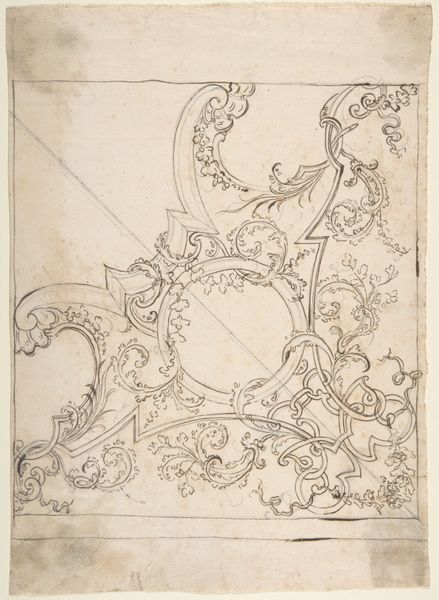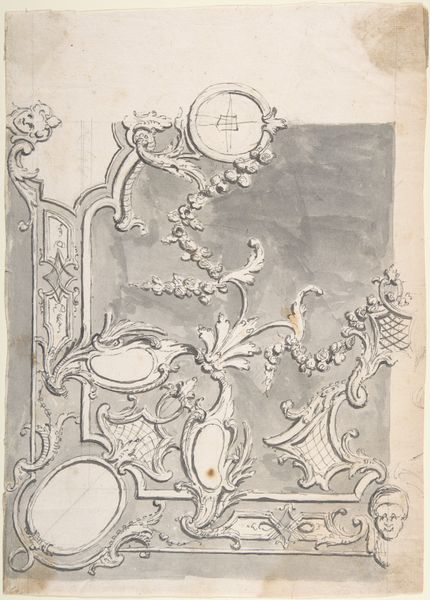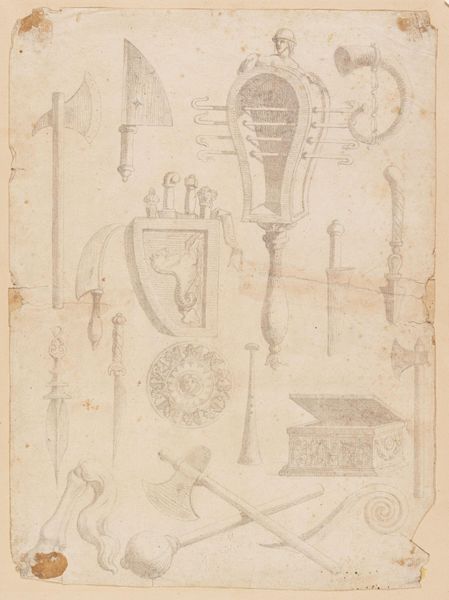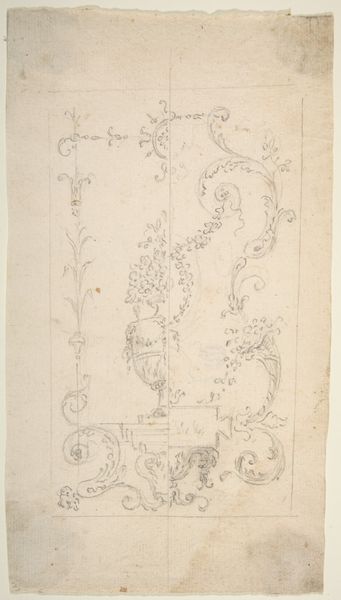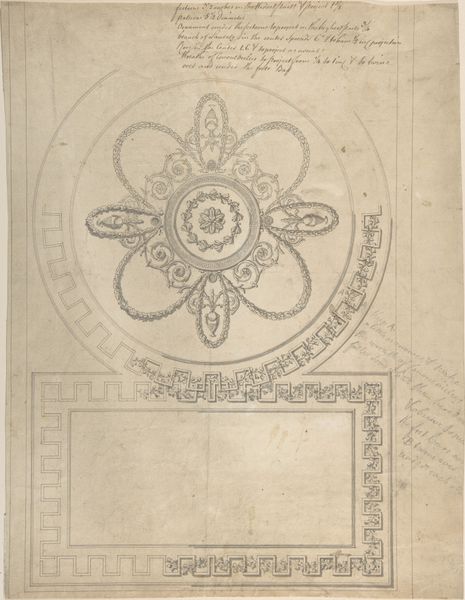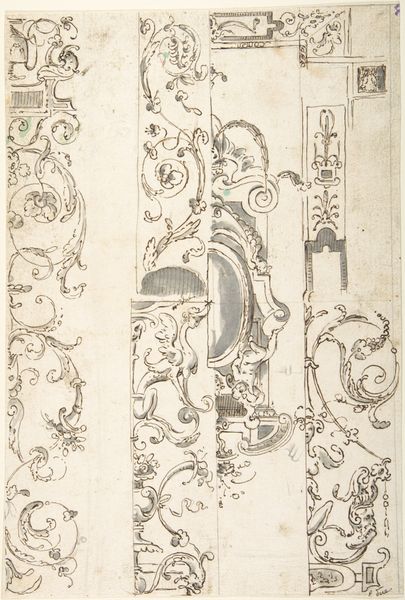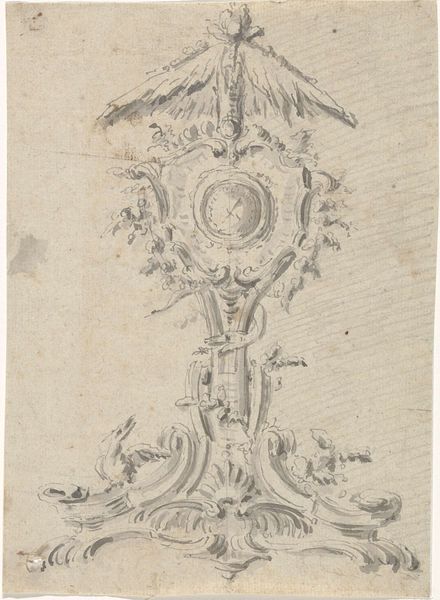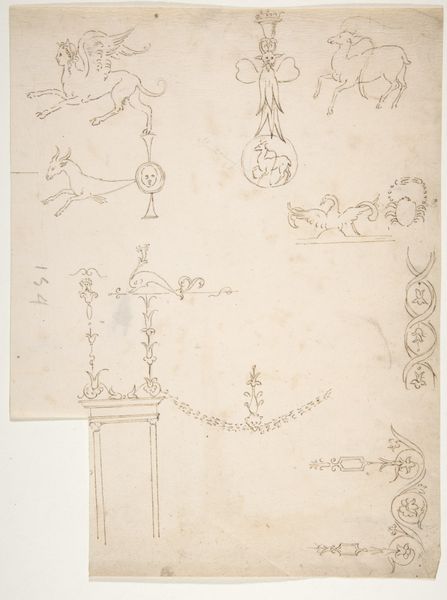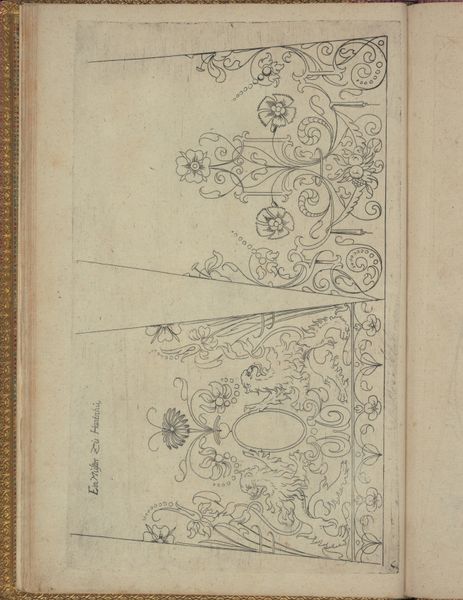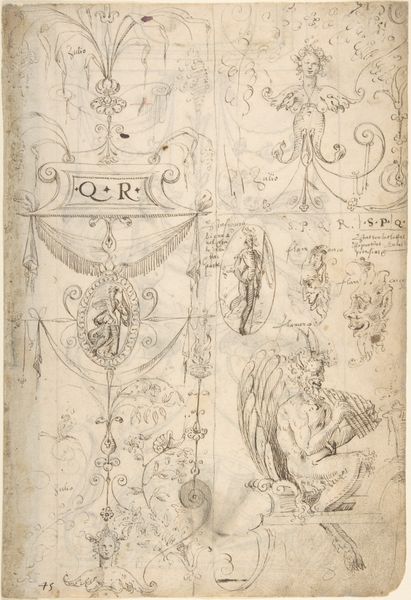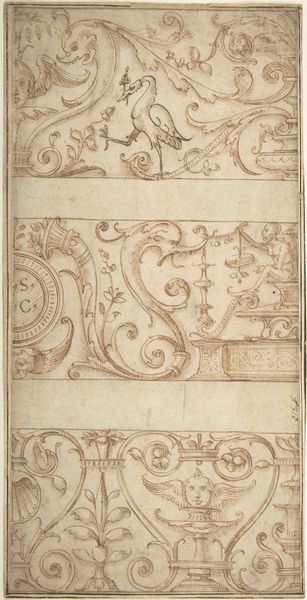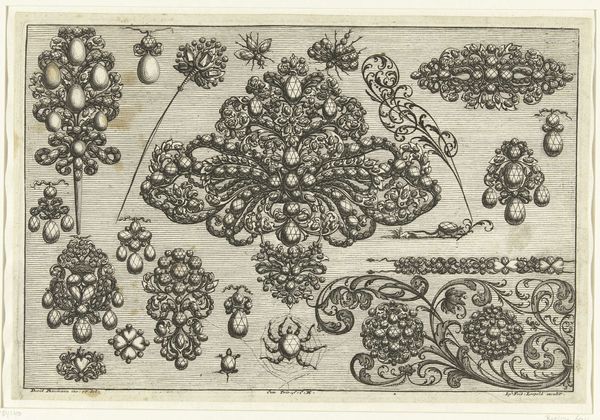
Temple of Castor and Pollux, soffit panel, ceiling plan (recto) Unidentified, stucco or fresco, details (verso) 1500 - 1560
0:00
0:00
drawing, ink
#
drawing
#
form
#
11_renaissance
#
ink
#
geometric
#
line
#
italian-renaissance
Dimensions: sheet: 8 11/16 x 6 1/8 in. (22 x 15.5 cm)
Copyright: Public Domain
Editor: Here we have an ink drawing, a soffit panel, for the Temple of Castor and Pollux. It dates to the 16th century and its artist is, unfortunately, unknown. There's something about this rendering – perhaps the somewhat tentative line work – that suggests process, or potential. How might we interpret this potentiality in a historical context? Curator: This drawing, as a historical artifact, exists in dialogue with the social and cultural expectations of its time. Consider the Renaissance. This period revived classical ideals and privileged rational thought alongside aesthetic beauty. How might this inform our reading of the drawing's purpose as a design? Editor: I see what you mean! The geometric precision mixed with the organic floral motifs strikes me as deeply symbolic in that respect. It is like a beautiful demonstration of man’s ingenuity bringing order to nature, even surpassing it! But what purpose would it serve? Curator: The Temple of Castor and Pollux held symbolic importance; deities protecting travellers and commerce. By understanding its decorative intentions through this lens, we reveal intersections of power, belief, and artistry in Renaissance society. Can we therefore question the privilege Renaissance society bestowed on man? Editor: You are encouraging a broader understanding that links together art, politics, and philosophy! It brings fresh and profound insights to something I simply thought to be an antique architectural blueprint. Curator: Indeed. These dialogues with the past prompt critical engagement, so let us move from seeing objects in isolation to cultural products that speak of larger societal values. Editor: I learned a lot about how an understanding of philosophical, political, and ideological history could inform and deepen an analysis of the simplest works! Curator: Absolutely! Let us keep challenging conventional narratives and seeking to promote diverse, critical understandings.
Comments
No comments
Be the first to comment and join the conversation on the ultimate creative platform.

